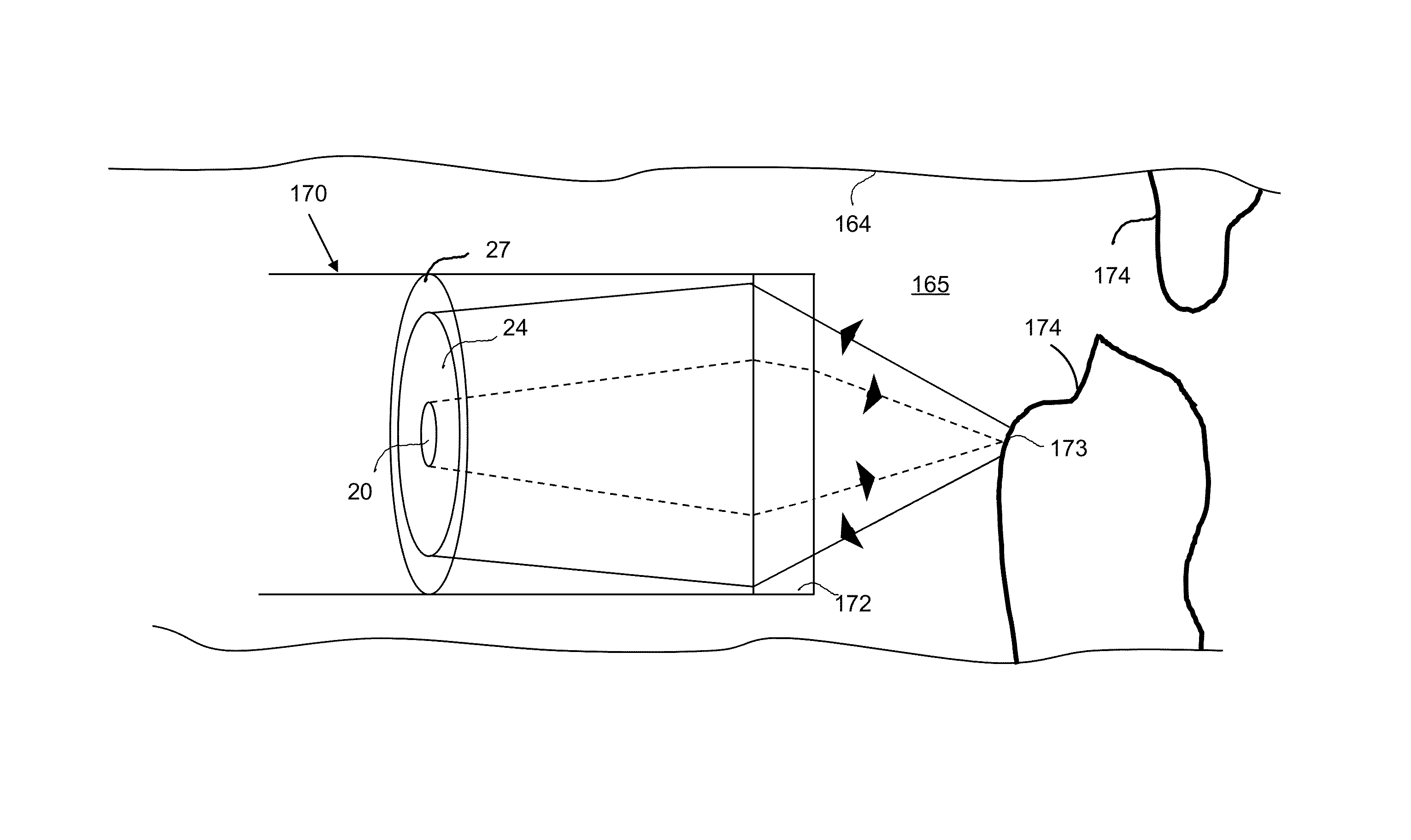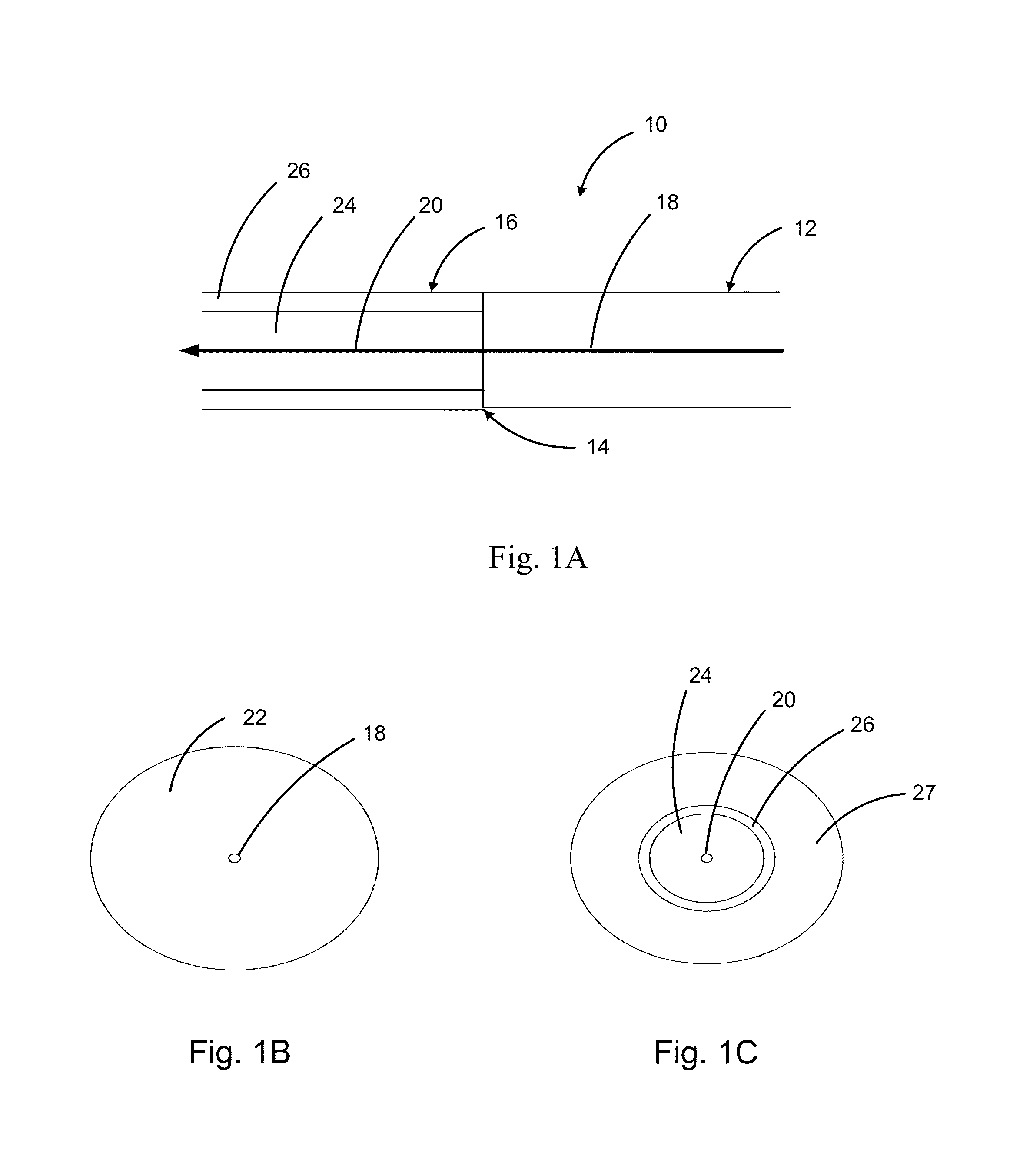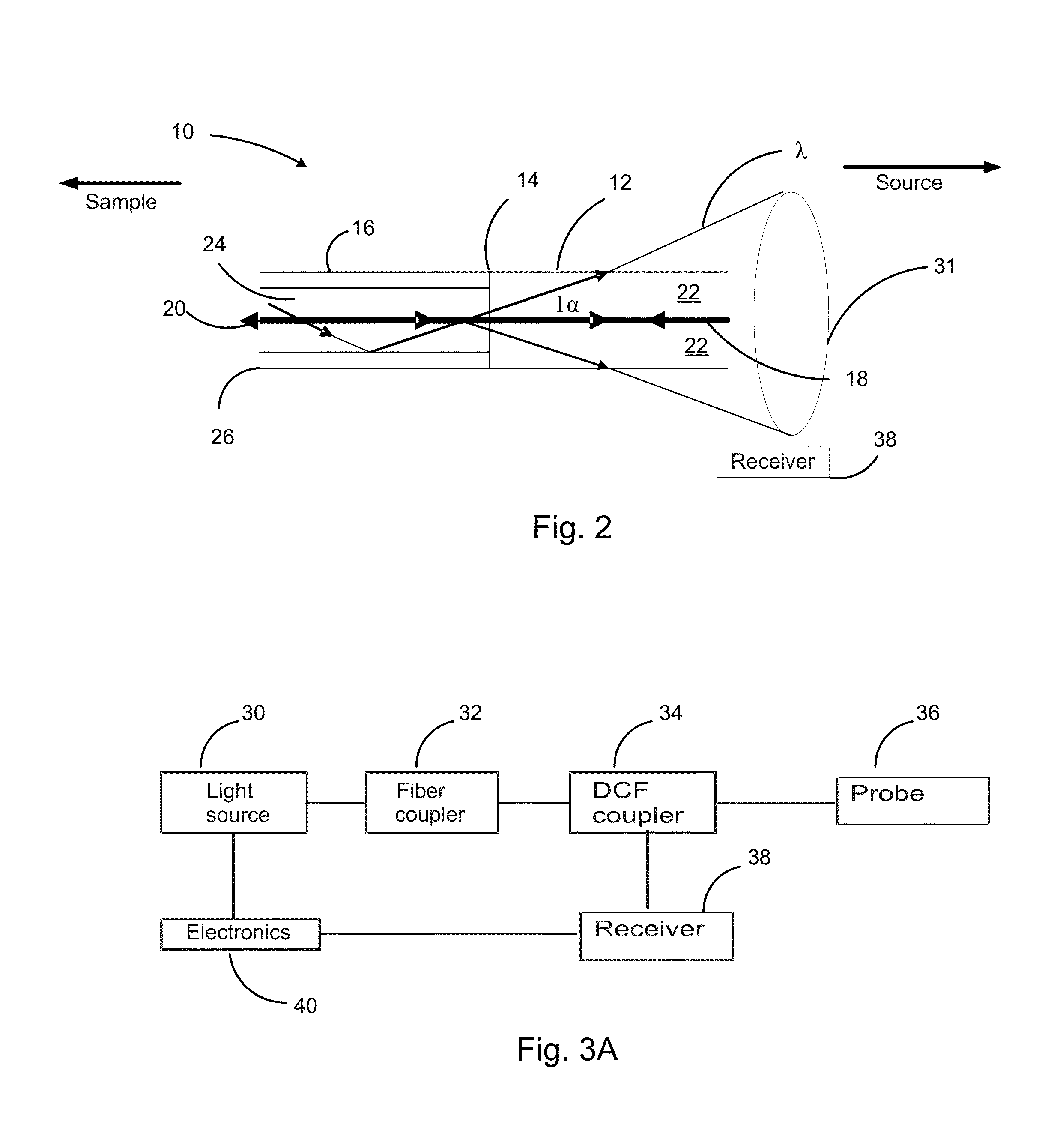Spectroscopic imaging probes, devices, and methods
a technology of spectroscopic imaging and probes, applied in the field of imaging probes, can solve the problems of difficult detection of collected signals relative to excitation light reflected from various optical interfaces, large size of fiber bundles, and high cost, and achieve the effect of reducing the number of optical interfaces, improving the detection efficiency, and improving the detection efficiency
- Summary
- Abstract
- Description
- Claims
- Application Information
AI Technical Summary
Benefits of technology
Problems solved by technology
Method used
Image
Examples
Embodiment Construction
[0054]FIG. 1A shows an exemplary optical coupler 10, constructed in accordance with an illustrative embodiment of the invention. A single-clad fiber (SCF) 12 is optically coupled to a dual-clad fiber (DCF) 16. In some embodiments, excitation light injected into the core 18 of SCF 12, enters the core 20 of DCF 16, and then propagates to a rotating imaging probe at the other end of the DCF 16 (not shown). FIG. 1B shows a cross-sectional view of the SCF 12 of FIG. 1A. SCF 12 has a core 18 and a single cladding layer 22. FIG. 1C shows a cross-sectional view of the DCF 16 of FIG. 1A. DCF has a core 20, a first (or inner) cladding layer 24, a second (or outer) cladding layer 26 and a jacket 27. Typically, the diameter of the outer cladding 26 matches the diameter of the cladding 22 in the SCF because most fibers are the same size. However, variations in fiber sizes and custom fibers are possible such that the diameters of coupled fibers or cladding layers can differ.
[0055]FIG. 2 shows fur...
PUM
 Login to View More
Login to View More Abstract
Description
Claims
Application Information
 Login to View More
Login to View More - R&D
- Intellectual Property
- Life Sciences
- Materials
- Tech Scout
- Unparalleled Data Quality
- Higher Quality Content
- 60% Fewer Hallucinations
Browse by: Latest US Patents, China's latest patents, Technical Efficacy Thesaurus, Application Domain, Technology Topic, Popular Technical Reports.
© 2025 PatSnap. All rights reserved.Legal|Privacy policy|Modern Slavery Act Transparency Statement|Sitemap|About US| Contact US: help@patsnap.com



